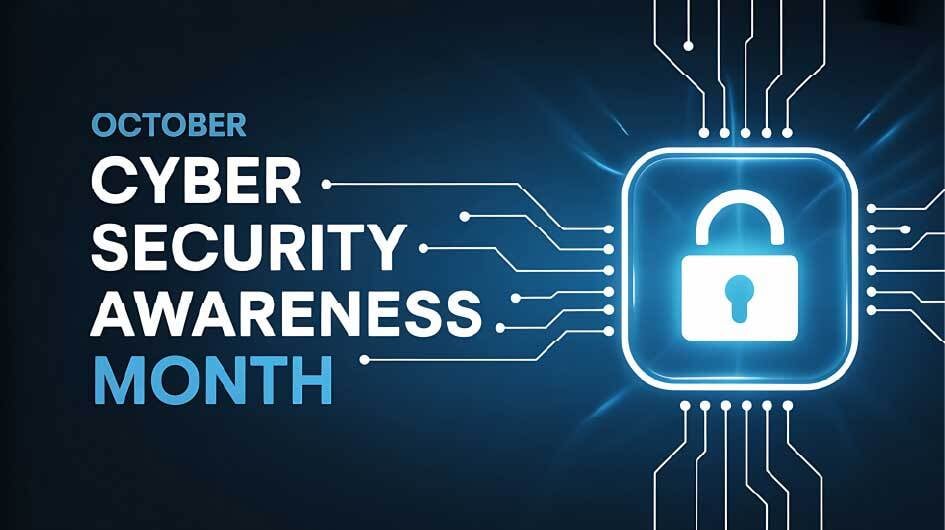October Is Cybersecurity Awareness Month: Building a Culture of Vigilance
October marks Cybersecurity Awareness Month, a global reminder that protecting our digital environments requires vigilance from everyone. Yet while...
Tailored consulting, engineering, and managed security services to meet your needs.
Discover who we are, what drives us, and how Cortrucent partners with businesses to deliver lasting security and technology success.
Explore Cortrucent’s latest insights, industry updates, and expert resources to strengthen your cybersecurity and IT strategy.
3 min read
Shane J. Henszey, CISSP
:
November 17, 2025

The cybersecurity landscape is changing faster than most organizations can adapt, and this year we witnessed a new milestone: a cyberattack campaign that weaponized Anthropic’s Claude large language model to aid in targeted exploitation. While the AI itself wasn’t breached, threat actors leveraged publicly accessible AI interfaces to generate convincing phishing content, automate research, and significantly reduce the barrier to launching complex attacks.
This incident represents a turning point.
For the first time at scale, AI wasn’t the target, AI was the tool.
And it raised a critical question: If AI systems can act, decide, and produce human-grade output… shouldn’t we treat them like identities?
At Cortrucent Security, the answer is unequivocally yes.
Organizations have spent decades maturing identity governance for humans and service accounts. But the rise of AI agents, autonomous or semi-autonomous systems capable of executing tasks, adds a third type of workforce identity.
Consider what modern AI systems can do:
Access third-party tools and APIs
Summarize or extract sensitive information
Execute multi-step workflows
Integrate with ticketing and operational systems
Communicate with customers and employees
Make decisions based on organizational data
This is identity behavior, plain and simple.
Yet most organizations:
❌ Do not track AI usage as identity activity
❌ Do not maintain permissions or entitlements for AI systems
❌ Do not log AI-initiated actions with proper attribution
❌ Do not govern what data AI systems should or should not access
❌ Do not maintain an AI acceptable-use or safety policy
In the Claude-assisted cyberattack, threat actors exploited this gap. They created “shadow AI agents,” spinning up AI sessions as unmonitored worker identities to generate malicious content and automate reconnaissance.
If organizations don’t move quickly, these gaps will only widen.
AI systems—whether Claude, ChatGPT, Gemini, or internal LLMs have the ability to:
Access systems
Manipulate data
Trigger workflows
Influence decisions
That means they must be subject to identity governance just like human and machine accounts.
1. Identity Classification
Assign each AI system a unique identity type (AI Worker, AI Agent, AI Integration).
2. Access Controls & Least Privilege
AI should receive only the data and API permissions needed for its approved purpose, nothing more.
3. Activity Logging & Monitoring
All AI-initiated actions must be traceable, auditable, and attributable.
4. Prompt & Output Governance
Create guardrails around acceptable prompts, data sources, and outputs.
5. Lifecycle Management
Track AI usage from onboarding to decommissioning, just like any employee or service account.
6. Continuous Risk Assessment
Monitor AI systems for drift, misuse, model hallucination, or unexpected behaviors.
If organizations don’t implement these controls, AI becomes an ungoverned insider, one that never sleeps, never asks for PTO, and can make mistakes at scale.
The attackers used the model to:
Generate tailored phishing campaigns
Draft malicious scripts without explicitly requesting harmful content
Analyze OSINT data to identify exploitable entry points
Iterate quickly and at volume
The lesson is not that Claude is unsafe.
The lesson is AI gives attackers leverage, and we must assume threat actors will incorporate AI into every stage of the cyber kill chain.
AI doesn’t replace attackers, it multiplies them.
Cortrucent Security recommends the following actionable steps:
1. Establish an AI Acceptable Use Policy (AUP)
Define what systems employees may use, what data is allowed, and which tasks require approved AI.
2. Begin Treating AI Systems as Identities
Include them in your IAM / IGA program.
3. Implement Governance for AI Agents
Any semi-autonomous agent needs logging, review, and permission scoping.
4. Restrict Sensitive Data Exposure
No AI system should ingest regulated, confidential, or proprietary information without governance approval.
5. Train Users on AI-Generated Social Engineering
Employees must learn to spot hyper-personalized phishing that AI now makes trivial.
6. Validate AI Output
Critical decisions should never rely solely on AI without human verification.
7. Conduct AI Security Assessments
Evaluate your organization’s attack surface created by internal and external AI tools.
8. Deploy Monitoring for AI-Related Threat Activity
Look for unusual volume, automation patterns, or outbound requests typical of AI-generated activity.
The future workforce will be a blend of:
Human employees
Machine identities
AI-driven agents
AI is not “just a tool.”
It is an operational actor, and operational actors require governance.
Organizations that fail to recognize this will face a surge of AI-accelerated breaches, not because AI is dangerous, but because unmanaged identities always become attack vectors.
At Cortrucent Security, we believe the companies that build AI identity governance today will be the ones that survive the threat landscape of tomorrow.
Stay vigilant. Stay secure.

October marks Cybersecurity Awareness Month, a global reminder that protecting our digital environments requires vigilance from everyone. Yet while...
As cyber threats grow in complexity and frequency, organizations are turning to Artificial Intelligence (AI)to defend their digital environments. ...

With cyber threats escalating every year, password security has become one of the most overlooked yet critical aspects of organizational safety. Weak...